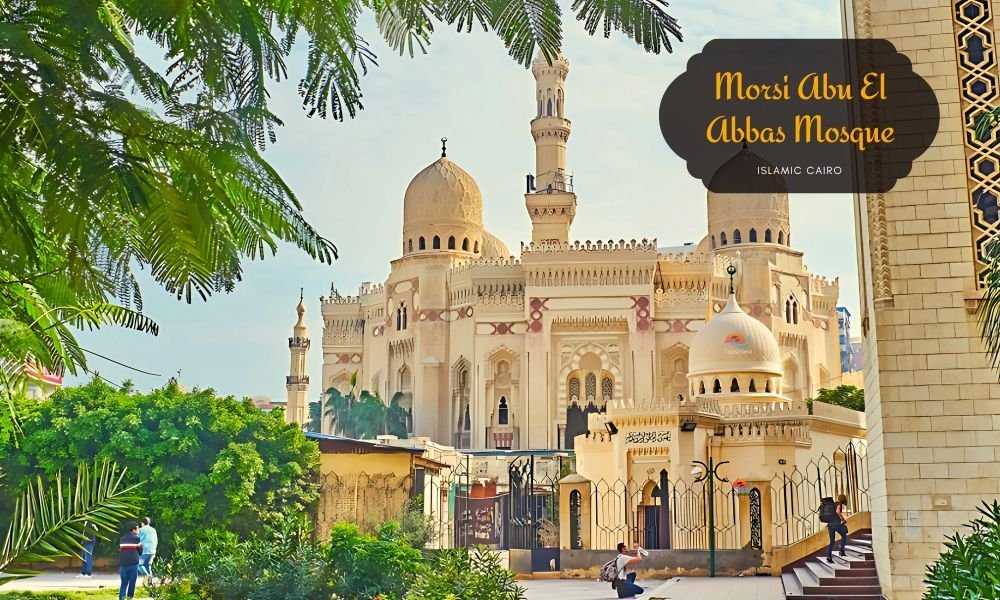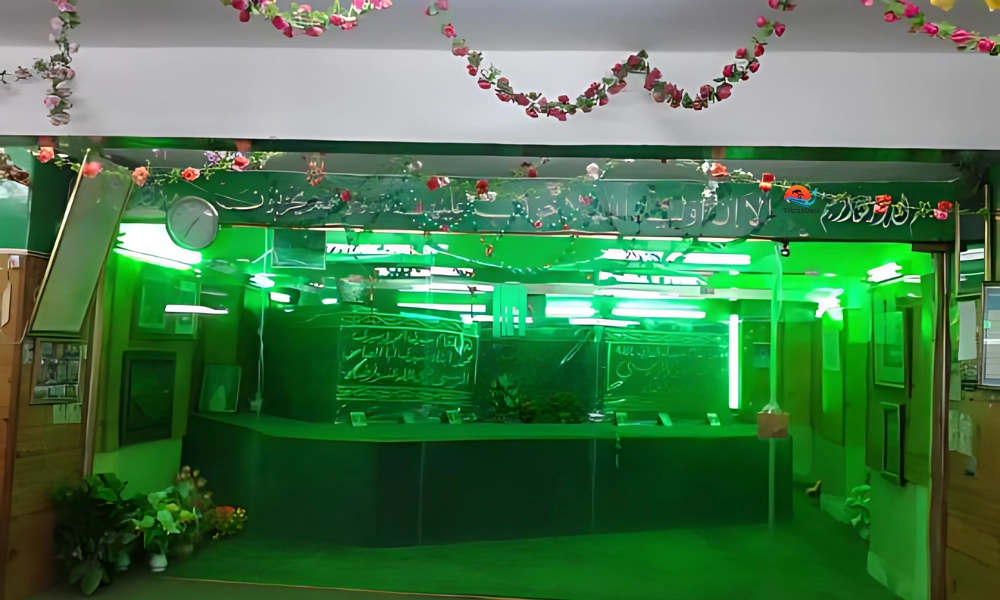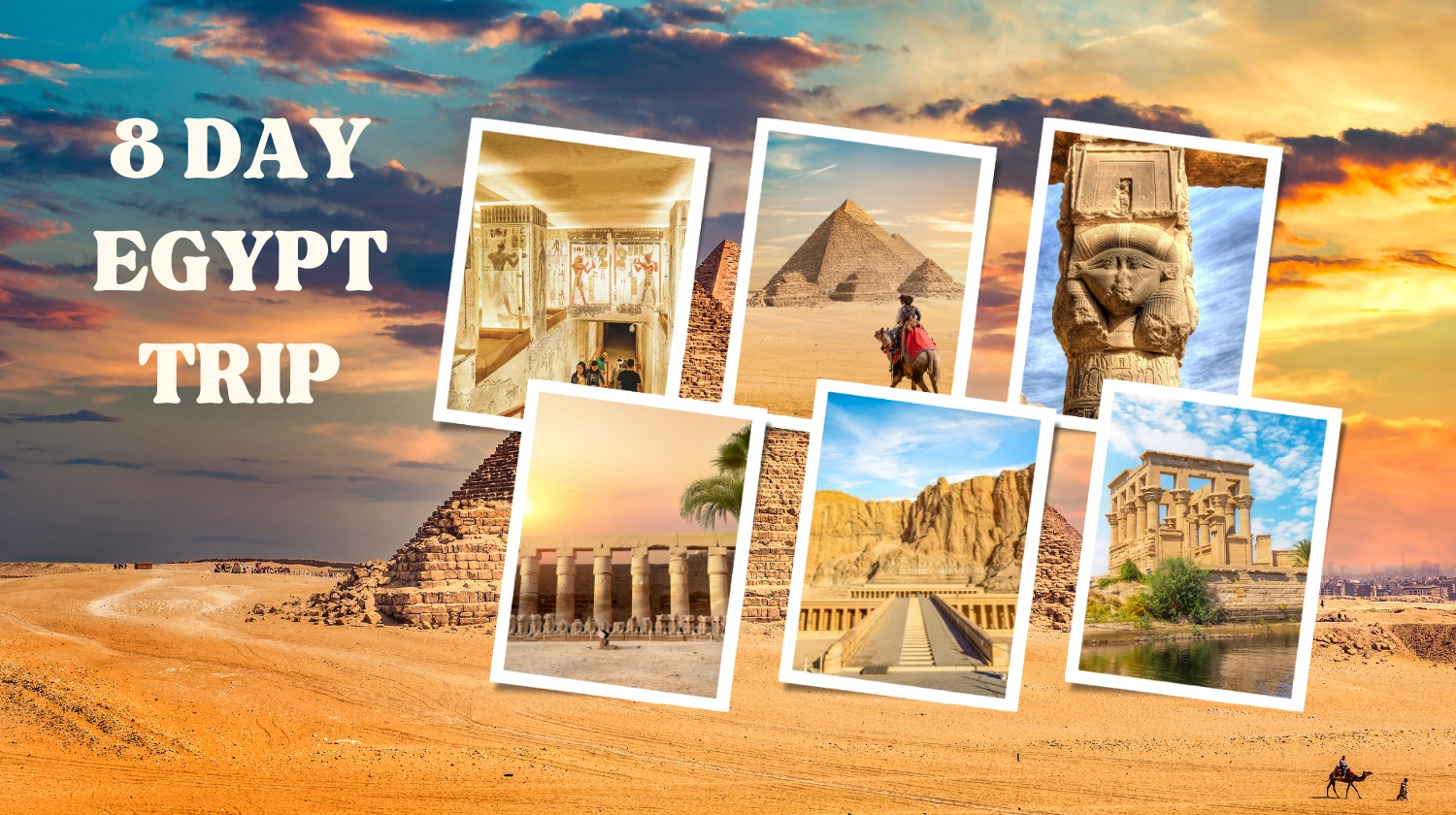Blogs

Morsi Abu El Abbas Mosque
Stepping inside the aesthetic area where fresh, breathing winds are blowing. You are in the coastal city of Alexandria. Egypt has brought up many iconic landmarks and timepieces in its lap. Like all, an unparalleled and unmatchable spot carrying an attractiveness and beauty inside it, meet the magnificent Morsi Abu El Abbas Mosque.
This is actually a symbol of both Islamic devotion and architectural grandeur. Due to its highly illuminated white domes, elegant arches, and four towering minarets, many visitors admire the art of masterpiece. This mosque has the power of dominating the skyline of Anfoushi district, inviting the visitors, locals, and history seekers at one time, and surrounding them surrounded by the magic of beauty.
Now-today, the Morsi Abu El Abbas Mosque has gotten its rank as the largest and most influential mosque in Alexandria. Because of its charming look, attractive design, and Islamic art, it grabs the attention of both pilgrims looking for blessings from Allah the Almighty in the mosque, and also for tourists who wish to absorb the whole scenic view with their eyes.
This mosque is covered by many other significant religious and cultural traditional iconic symbols of Cairo, such as the Qaitbay Citadel and El-Mursi Abul Abbas Square. This mosque delivers a key stopping point while moving from Islamic Cairo to Alexandria’s historic quarter.
This guide has been compiled to provide information on this mosque. This mosque is not only a cultural and Islamic monument, but thousands of hearts are connected to it due to artistic genuineness, traditional identity, and Egypt’s enduring faith. Whether you’re visiting, praying, or looking for history, you will find faith, love, power, and spirituality in a way.
Table of Contents
- Overview and Location of the Mosque in Alexandria
- Why the Mosque is Important to Egyptian Heritage
- The Life and Legacy of Abu El Abbas al-Mursi
- The Historical Origins of the Mosque
- Architectural Features and Islamic Art
- Religious and Cultural Significance
- Morsi Abu El Abbas Mosque in the Modern Era
- The Tomb of Abu El Abbas al-Mursi
- Educational and Cultural Influence
- Nearby Attractions and Cultural Landmarks
- Visiting Tips for Tourists and Pilgrims
- Photography and Visitor Experience
- Conclusion:
Overview and Location of the Mosque in Alexandria
Along the Mediterranean coast, the Morsi Abu El Abbad Mosque has dominated the area of the AnfoushiDistrict of Alexandria. The gleaming domes and high-tall minarets capture the skyline, showing it is not a spot of worship or prayer only, but it highlights the strong existence of this mosque in famous and top traditional landmarks. Visitors are drawn to its spiritual atmosphere as well as its convenient location, surrounded by some of Alexandria’s most famous attractions.
- District: Anfoushi, Alexandria, Egypt
- Accessibility: Easily reachable by car, local taxis, or guided tours. Its central location makes it an essential stop for pilgrims and tourists alike.
- Nearby Landmarks:
- Qaitbay Citadel: a historic fortress guarding the harbor.
- El-Mursi Abul Abbas Square: a cultural hub often alive with festivals and gatherings.
- Other Historic Mosques: including Al-Busiri Mosque and Yaqut al-Arshi Mosque, forming a cluster of sacred sites.
This mosque represents the ideal blend of both spiritual heritage and strategic location, guaranteeing that this mosque is famous for religious devotion and Alexandrian tourism factors.
Why the Mosque is Important to Egyptian Heritage
The importance of the Morsi Abu El Abbas Mosque extends well beyond its striking appearance. It represents Egypt’s rich Islamic legacy, where faith, art, and culture intertwine. Built in honor of the revered Sufi saint Abu El Abbas al-Mursi, the mosque continues to embody centuries of devotion and scholarship.
- Spiritual Role: A major Sufi center, hosting gatherings, teachings, and the annual Mawlid (festival) of Abu El Abbas.
- Architectural Significance: Its design reflects the Mamluk and Ottoman influences, while later renovations highlight Egypt’s evolving architectural identity.
- Cultural Hub: The mosque and its surrounding square act as a gathering place for worshippers, students, and travelers, keeping its traditions alive.
- Symbol of Identity: For Egyptians, the mosque is a source of pride, connecting modern-day Alexandria with its deep-rooted Islamic history.
In short, the Morsi Abu El Abbas Mosque is more than a religious site - it is a living monument that safeguards Egypt’s spiritual and cultural identity.

The Life and Legacy of Abu El Abbas al-Mursi
Who Was Abu El Abbas?
Abu El Abbas al-Mursi (1219–1287 CE) was a revered Sufi scholar and saint, originally from Murcia, Andalusia (modern Spain). He is famous for his wisdom, humility, and dedication to Islamic spirituality.
His Spiritual Journey from Andalusia to Alexandria
After the fall of Andalusia to Christian powers, Abu El Abbas migrated eastward, eventually settling in Alexandria, Egypt, where he became a prominent teacher of Sufism.
His Influence on Sufism in Egypt
His teachings emphasized inner purity, devotion, and love for God, influencing generations of Sufi scholars and students. Today, his Mawlid (birth celebration) is one of the most attended Sufi festivals in Egypt.
The Historical Origins of the Mosque
- When and Why Built: The original tomb and shrine were constructed in the 13th century after Abu El Abbas’s death.
- Patronage: Over centuries, the site received patronage from Mamluk rulers, Ottoman governors, and modern Egyptian authorities, each leaving architectural imprints.
- Evolution: Initially a modest tomb, the site was expanded into a grand mosque in 1775 by Algerian Sheikh Abu al-Hassan al-Maghribi and further renovated in 1943 by the Egyptian government.
Architectural Features and Islamic Art
The Morsi Abu El Abbas Mosque is celebrated not only for its spiritual significance but also for its breathtaking architecture. Its design blends Mamluk and Ottoman influences, creating a structure that is both majestic and deeply symbolic of Egypt’s Islamic heritage. Every detail, from the soaring minarets to the delicate calligraphy, tells a story of faith expressed through art.
- Dome & Minarets: The mosque’s massive central dome and four towering minarets dominate Alexandria’s skyline, acting as both a spiritual beacon and an architectural landmark.
- Courtyard: A spacious marble courtyard provides an open gathering space for worshippers, especially during Friday prayers and religious festivals.
- Interior Design: The prayer hall is adorned with intricate Arabic calligraphy, geometric patterns, and gilded ornamentation, all hallmarks of Ottoman-Mamluk artistry.
- Symbolism: Every architectural element - arches, lanterns, domes, and decorative motifs - reflects the Islamic philosophy of blending spirituality with beauty, reminding visitors of the harmony between faith and art.
Together, these features make the mosque not just a place of worship but also a living masterpiece of Islamic architecture, admired by scholars, pilgrims, and travelers alike.
Religious and Cultural Significance
The Morsi Abu El Abbas Mosque is more than an architectural marvel; it is a living spiritual hub that continues to shape Egypt’s religious and cultural identity. For centuries, it has stood as one of the country’s most revered Sufi centers, attracting both local worshippers and international pilgrims seeking spiritual connection.
- Spiritual Center: Widely regarded as one of the most important Sufi mosques in Egypt, the mosque fosters an atmosphere of devotion, reflection, and spiritual growth. It remains a central place for Sufi practices, dhikr (remembrance of God), and gatherings.
- Annual Mawlid: Each year, the mosque becomes the heart of celebration during the Mawlid of Abu El Abbas al-Mursi, marked by colorful processions, Qur’anic recitations, and spiritual gatherings that draw thousands of devotees from across Egypt and beyond.
- Pilgrimage Site: For many Muslims, the mosque is considered a sacred destination, where visitors seek barakah (blessings) and a deeper spiritual connection with God through the legacy of Abu El Abbas.
Through these traditions, the mosque has preserved its role as a pillar of Islamic faith and culture, ensuring that the legacy of Abu El Abbas al-Mursi continues to inspire generations.
Morsi Abu El Abbas Mosque in the Modern Era
Today, the Morsi Abu El Abbas Mosque continues to thrive as both a religious sanctuary and cultural landmark. Despite the passage of centuries, it has successfully preserved its spiritual role while embracing modern restoration efforts.
- Restoration Efforts: In the 20th century, the mosque underwent major renovations, including structural strengthening, dome and minaret restoration, and decorative refinements. These efforts ensured the preservation of its Ottoman-Mamluk-inspired architecture, safeguarding its heritage for future generations.
- Current Role: The mosque is not only a place of daily prayer but also a hub for Sufi gatherings, religious education, and community life. It continues to serve as a bridge between tradition and modern faith practice.
- Tourist Appeal: As one of Alexandria’s most visited landmarks, the mosque attracts travelers, scholars, and spiritual seekers from around the world, who are drawn to its architectural beauty and serene atmosphere.
The Tomb of Abu El Abbas al-Mursi
At the heart of the mosque lies the tomb of Abu El Abbas al-Mursi, the revered Sufi saint who inspired its creation. The shrine is the spiritual core of the complex, attracting both worshippers and pilgrims.
- Sacred Resting Place: Many visitors come to pay respects, seek blessings, and connect with the saint’s spiritual legacy.
- Design and Decoration: The tomb chamber is richly decorated with calligraphy, marble, and intricate patterns, reflecting its sanctity.
- Symbol of Sufi Tradition: It serves as a reminder of Egypt’s deep Sufi heritage and the continuing influence of saints in Islamic spirituality.

Educational and Cultural Influence
Beyond being a place of worship, the mosque has historically served as a center of learning and culture.
- Teaching Sufism: Scholars and spiritual leaders have used the mosque to teach the principles of Sufism and Islamic knowledge.
- Cultural Gatherings: Over centuries, it has hosted lectures, recitations, and religious debates, making it a hub for intellectual and cultural exchange.
- Modern Role: Today, it continues to inspire students, researchers, and visitors interested in Egypt’s religious and artistic traditions.
Nearby Attractions and Cultural Landmarks
A visit to the mosque is often part of a larger cultural journey through Alexandria, as it is surrounded by historic and scenic sites:
-
Qaitbay Citadel: A 15th-century fortress on the Mediterranean coast, built on the site of the legendary Lighthouse of Alexandria.
-
El-Mursi Abul Abbas Square: A lively public plaza adjacent to the mosque, often filled with cultural events, family gatherings, and local street life.
-
Other Mosques: Nearby are other important Sufi landmarks, such as the Mosque of Al-Busiri and the Mosque of Sidi Yaqut al-Arshi, each dedicated to revered saints.
Visiting Tips for Tourists and Pilgrims
To make the most of your visit to the Morsi Abu El Abbas Mosque, it is important to follow local customs and respect the mosque’s spiritual environment:
- Best Time to Visit: Early mornings or evenings are ideal, as they allow visitors to enjoy the mosque in a peaceful setting, outside of peak prayer hours.
- Dress Code: Modest attire is expected. Men should avoid shorts, while women are required to cover their hair and wear loose-fitting clothing before entering.
- Etiquette: The mosque is an active place of worship, so visitors should remain quiet, respect ongoing prayers, and note that photography may be restricted inside the prayer hall.
- Guided Tours: Engaging a local guide can greatly enhance the experience, offering valuable insights into the mosque’s history, architecture, and spiritual role in Alexandria.
Photography and Visitor Experience
For visitors, the mosque offers not only spiritual enrichment but also a captivating visual experience. Its striking architecture, open courtyards, and serene atmosphere make it one of Alexandria’s most photogenic landmarks.
- Architectural Beauty: The mosque’s white domes and soaring minarets dominate the skyline, creating breathtaking photo opportunities from different angles.
- Courtyard Views: The marble courtyards provide elegant backdrops, especially during sunset when the golden light reflects off the domes.
- Respectful Photography: While the exterior is often photographed freely, visitors should always respect guidelines regarding photography inside the prayer halls.
For both worshippers and tourists, the Morsi Abu El Abbas Mosque offers an experience that is as visually inspiring as it is spiritually uplifting.

Conclusion:
Beyond an architectural timepiece and legacy, the Morsi Abu El Abbas Mosque is a living spirit and soul of Egypt, where spirituality and traditional identification meet in the same way. If we imagine its remarkable beginning as its attractive shrine to its status in this era, it has gained too much popularity among major cultural and old mosques in Islamic Cairo, Egypt. This feature represents the clear influence of Islamic art, culture, Sufism, and community devotion. That’s the reason people love to visit and explore this Mosque in the priority list of must-visited mosques.
It delivers a different aspect of spirit to every single individual. For instance, if you are a worshiper, this is a place where you can find a strong connection with Allah The Almighty, as with others, it is also a spot of faith and blessings. For travelers, it provides a golden opportunity for travelers to explore the spiritual heart of Cairo to make their traveling profile and interests better. Moreover, it is an iconic symbol of past dynasties. The existence of its beauty, its structure, and art never died. Moreover, it depicts that the light and teaching guidance of Abu El Abbas al-Mursi still lives in the hearts of everyone who loves to seek knowledge, and is an inspiring model for future generations.





